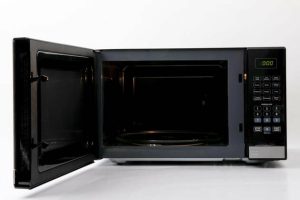Microwave engineering is a critical field that involves the study and application of microwave frequencies for various technologies, including radar, telecommunications, and microwave heating. Within this domain, understanding the E plane and H plane is fundamental for designing and analyzing microwave components and systems. This article delves into the intricate details of the E plane and H plane, focusing on their definitions, significance, and applications in microwave engineering.
Understanding the E Plane and H Plane
The E plane and H plane are two orthogonal planes that are essential in the analysis of electromagnetic waves, particularly in microwave engineering. The E plane, or electric plane, contains the electric field vector, while the H plane, or magnetic plane, contains the magnetic field vector. These planes are perpendicular to each other and to the direction of wave propagation.
E Plane Characteristics
- Field Orientation: In the E plane, the electric field (E-field) is dominant and dictates the polarization of the wave.
- Design Implications: The orientation and distribution of the E-field significantly affect the radiation pattern and impedance of antennas and waveguides.
H Plane Characteristics
- Field Orientation: The H plane is defined by the magnetic field (H-field) orientation, playing a crucial role in determining the wave's behavior.
- Application in Design: Understanding the H-field distribution is vital for optimizing the design of microwave circuits, including filters and couplers.

Applications in Microwave Engineering
The concepts of the E plane and H plane find extensive applications in the design and analysis of microwave components and systems.
Antenna Design
- Polarization and Directionality: The orientation of the E and H planes directly influences the antenna's polarization and directionality, critical factors for achieving desired performance in communication systems.
- Bandwidth and Efficiency: Antennas designed with precise control over the E and H plane characteristics can achieve broader bandwidths and higher efficiency, essential for modern wireless applications.
Waveguide Components
- Waveguide Tees and Couplers: The design of waveguide components, such as tees and couplers, relies heavily on the manipulation of E and H plane characteristics to control power distribution and phase shifts within microwave systems.
- Optimization of Performance: By fine-tuning the dimensions and materials based on E and H plane analysis, engineers can significantly improve the performance of waveguide components, including minimizing losses and maximizing power handling capabilities.
Design Considerations and Parameters
When designing microwave components and systems, several parameters and considerations come into play, influenced by the E and H plane characteristics.
Power and Efficiency
- Maximizing Power Transfer: Efficient power transfer in microwave systems requires careful alignment and matching of the E and H planes, especially in antenna-to-waveguide transitions.
- Efficiency Metrics: Components designed with optimal E and H plane configurations exhibit higher efficiency, reducing power losses and enhancing system performance.
Cost and Material Selection
- Material Costs: The choice of materials for microwave components is often a trade-off between performance and cost. Materials with better dielectric properties might offer superior E and H plane behavior but at a higher price.
- Manufacturing Considerations: The complexity of designs that effectively manipulate the E and H planes can also impact manufacturing costs and feasibility.
Dimensions and Specifications
- Critical Dimensions: The dimensions of microwave components, including length, width, and height, are closely tied to the behavior of the E and H planes, affecting wavelength, impedance, and resonant frequencies.
- Tolerance and Precision: Achieving the desired performance requires high precision in manufacturing, as small deviations can significantly impact the E and H plane characteristics and, consequently, the component's functionality.
Conclusion
The exploration of the E plane and H plane in microwave engineering provides essential insights into the design and analysis of microwave systems and components. Understanding these concepts allows engineers to optimize performance, efficiency, and cost-effectiveness of microwave technologies. Through detailed analysis and application of E and H plane principles, advancements in microwave engineering continue to drive innovation in communication, radar, and other critical technologies.
